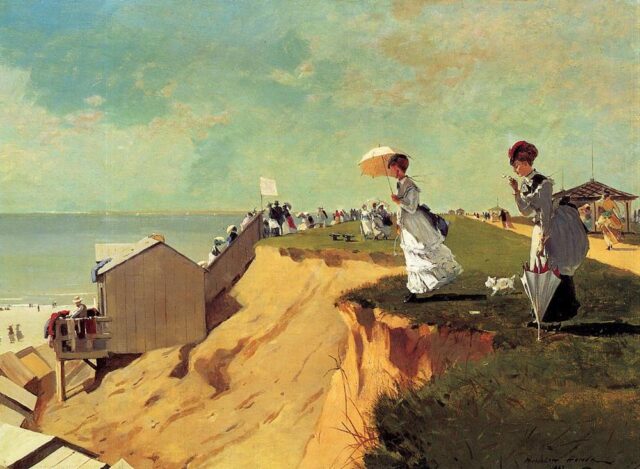
Impressionism, an art movement that originated in France during the late 19th century, made a profound impact on the world of art. While its roots are firmly embedded in France, Impressionism found fertile ground in the United States during the same period, where it flourished and evolved. In this article, we will delve into the history of Impressionism in the USA, explore the famous American Impressionist painters, and touch upon the remarkable contributions of artists like Mary Cassatt.
The Emergence of Impressionism in the USA
Impressionism, characterized by its emphasis on capturing fleeting moments and atmospheric effects through loose brushwork and vibrant colors, was initially met with skepticism and resistance in the United States. However, as American artists began to travel to Europe, they were exposed to the revolutionary ideas of Impressionism, and they brought these concepts back with them.
One of the earliest American artists influenced by Impressionism was James Abbott McNeill Whistler, who lived in France for an extended period and adopted some of the movement’s techniques. His nocturnal scenes of urban life, such as “Nocturne in Black and Gold: The Falling Rocket,” showcased his unique interpretation of Impressionism.
Prominent American Impressionist Painters
Childe Hassam (1859-1935):
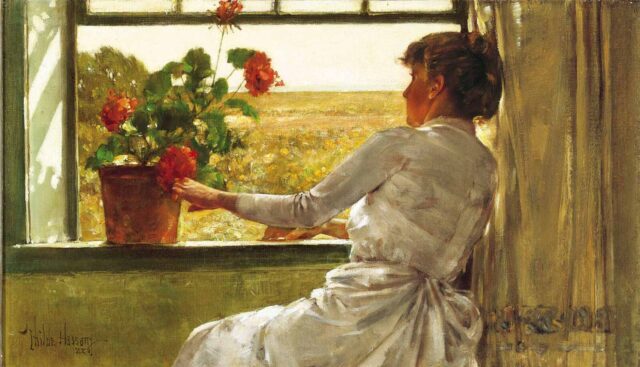
Childe Hassam, often referred to as the “American Impressionist,” was instrumental in popularizing the movement in the United States. His works, such as “Rainy Day, Boston” and “Flags on the Waldorf,” captured the bustling streets of American cities in a style reminiscent of the French Impressionists. His use of light and color created a sense of vitality and immediacy in his paintings, drawing viewers into the heart of the scene.
John Singer Sargent (1856-1925):
Although primarily known for his portraits, John Singer Sargent’s talent extended to Impressionism as well. His mastery of brushwork and ability to capture light is evident in works like “Claude Monet’s Painting at the Edge of a Wood,” where he depicted his friend and fellow Impressionist, Claude Monet, in a serene outdoor setting.
William Merritt Chase (1849-1916):
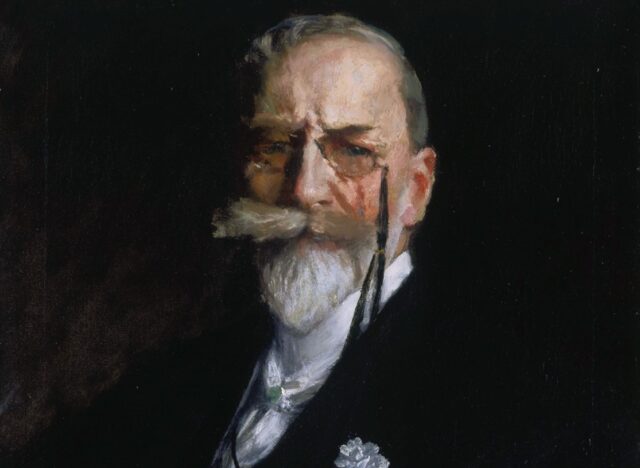
William Merritt Chase was a prominent American Impressionist known for his portraits, landscapes, and still-life paintings. His work often combined elements of Impressionism with the academic traditions of the time. One of his iconic works, “Portrait of a Lady in Pink,” showcases his mastery of capturing the personality and elegance of his subjects. You can find his works in various art institutions, including the Metropolitan Museum of Art in New York City and the Art Institute of Chicago.
Frederick Carl Frieseke (1874-1939):
Frederick Carl Frieseke, an American Impressionist who spent much of his life in France, was celebrated for his depictions of the female figure in outdoor settings. His painting “Breakfast in Bed” is a beautiful example of his style, with dazzling sunlight and vibrant colors. You can see some of his works at the Smithsonian American Art Museum in Washington, D.C.
Theodore Earl Butler (1861-1936):
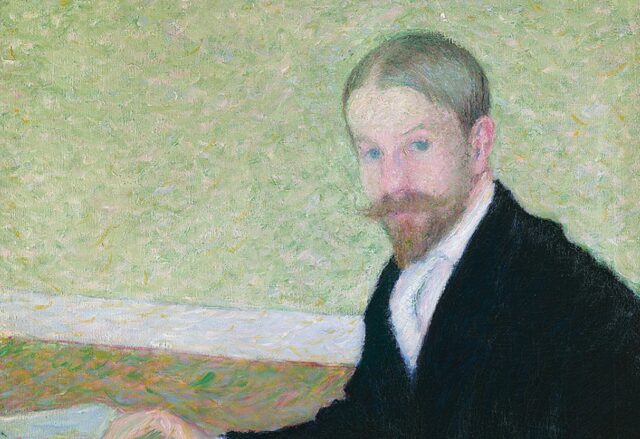
Theodore Earl Butler, another American artist influenced by Impressionism, spent significant time in Giverny, France, where he painted alongside Claude Monet. His painting “The Breakfast Table” exemplifies his love for capturing everyday moments in an Impressionistic manner. You can find his works at institutions like the Butler Institute of American Art in Ohio.
Julian Alden Weir (1852-1919):
Julian Alden Weir was a prominent figure in the American Impressionist movement and one of the founders of the Cos Cob Art Colony in Connecticut. His painting “The Red Bridge” showcases his affinity for capturing the beauty of nature in an Impressionist style. You can view his works at the Weir Farm National Historic Site, a preserved location that was once his home and studio.
Frank W. Benson (1862-1951):
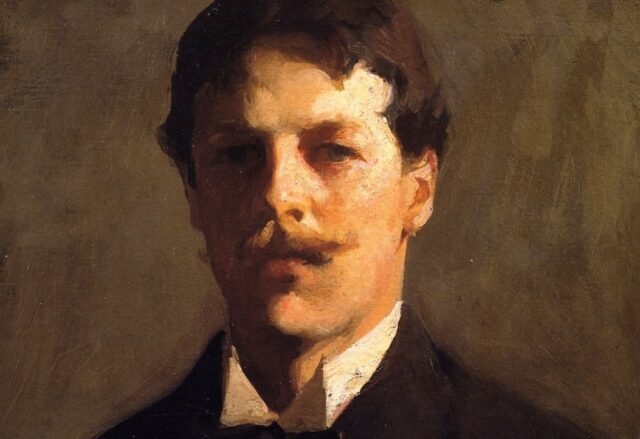
Frank W. Benson was known for his portraits, landscapes, and depictions of wildlife. His painting “Eleanor” is a stunning example of his Impressionist approach to portraiture. His works can be seen in various museums, including the Museum of Fine Arts in Boston.
These American Impressionist painters contributed to the rich tapestry of Impressionism in the USA, each bringing their unique vision and techniques to the movement. Their works are displayed in renowned art institutions across the country, allowing art enthusiasts to appreciate the beauty and diversity of American Impressionism.
Mary Cassatt (1844-1926):
Mary Cassatt, while American by birth, spent much of her career in France, where she became closely associated with the Impressionist movement. Her works, particularly her portraits of mothers and children, reflect the Impressionist focus on everyday life. Cassatt’s skillful use of color and composition, combined with her intimate subject matter, made her a significant figure in both American and European Impressionism.
Mary Cassatt’s Contribution to Impressionism
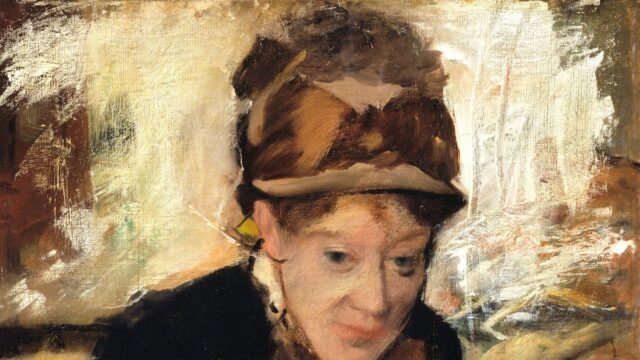
Mary Cassatt, one of the few women artists of her time to gain recognition and respect, played a pivotal role in advancing Impressionism in the United States. Her works often depicted the intimate moments between mothers and children, reflecting her fascination with domestic life. Cassatt’s ability to capture the nuances of human emotion and her mastery of color and composition set her apart as a true Impressionist. You can visit this website to explore Mary Cassatt’s paintings reproductions.
One of her most famous works, “The Child’s Bath,” exemplifies her talent for depicting the everyday in a compelling manner. The painting portrays a mother bathing her child, rendered with soft, pastel colors and a sense of tender intimacy. Cassatt’s ability to convey the complex emotions between the mother and child made her a beloved figure in the world of Impressionism.
The Evolution of American Impressionism
As American artists continued to experiment with Impressionist techniques, the movement evolved in unique ways in the USA. While many adhered closely to the principles of their French counterparts, others incorporated American themes and landscapes into their work. For instance, artists like Theodore Robinson and Willard Metcalf adapted Impressionism to capture the beauty of the American countryside, giving rise to the style known as American Impressionism.
The Giverny Colony, a group of American artists who worked in the same French village as Claude Monet, played a significant role in bridging the gap between American and French Impressionism. Their interactions with Monet and exposure to the European art scene enriched their understanding of Impressionism, which they then brought back to the United States.
Impressionism, born in France during the late 19th century, found a welcoming home in the United States, where it was embraced and adapted by American artists. Influential painters like Childe Hassam, John Singer Sargent, and Mary Cassatt introduced and popularized Impressionism in the USA, contributing to its evolution into American Impressionism. While maintaining the core principles of the movement, American Impressionists added their unique perspectives, creating a vibrant and diverse artistic landscape. Mary Cassatt’s intimate and emotionally charged depictions of everyday life remain an enduring testament to the impact of Impressionism in the United States. Visit this website to explore Mary Cassatt’s paintings reproductions and experience the beauty of American Impressionism for yourself.





